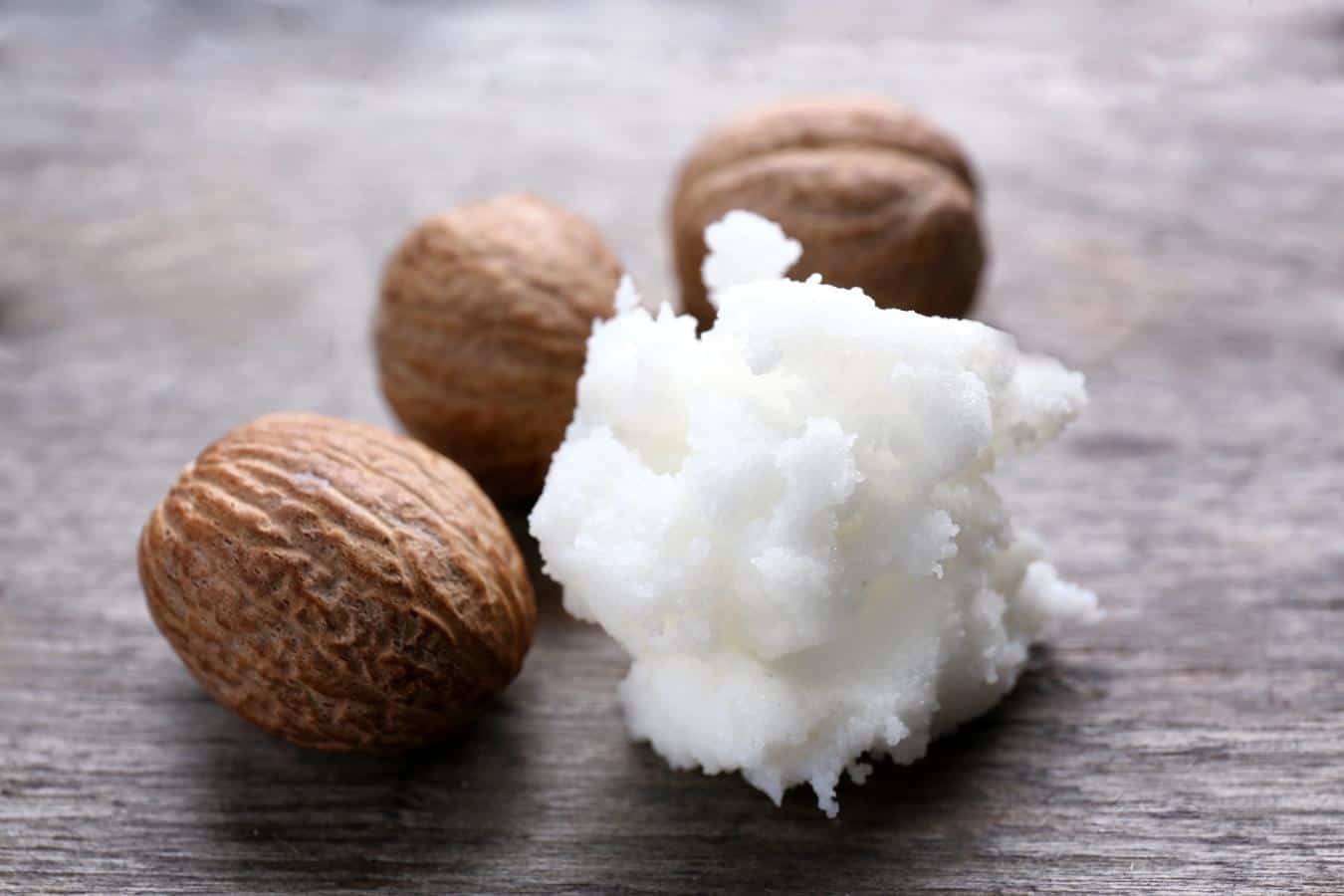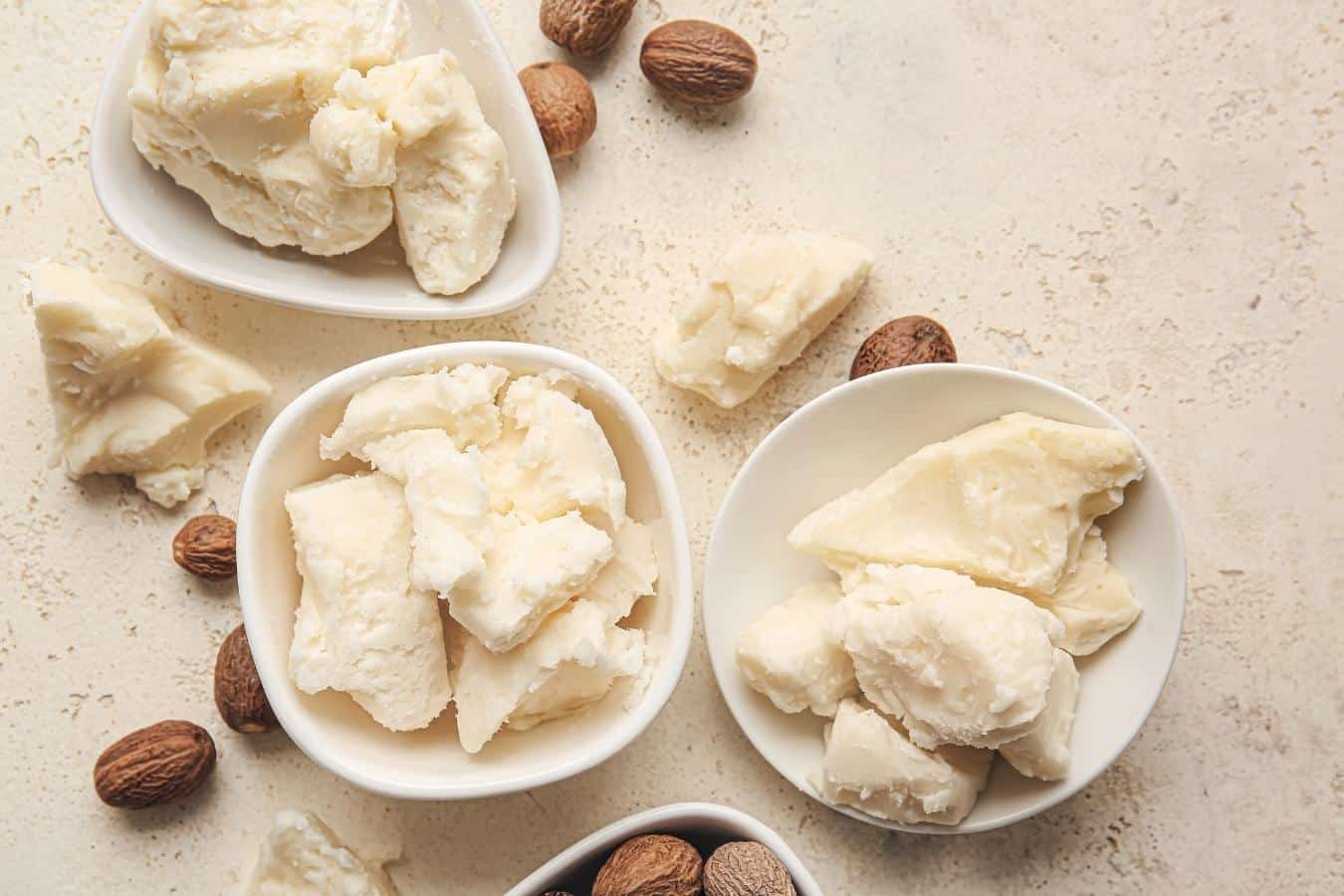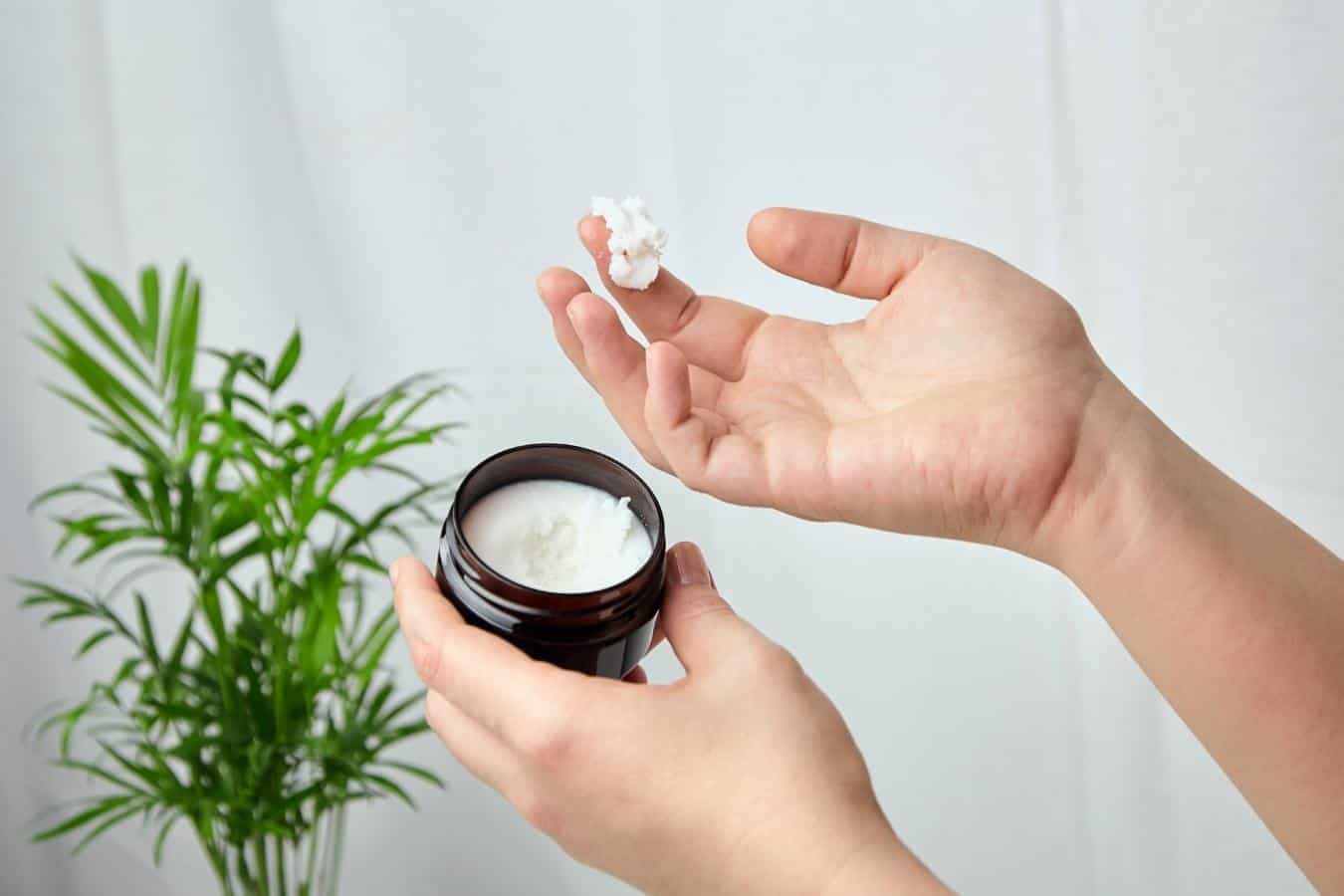Shea butter is considered one of the best all-natural materials for sealing in moisture and healing your skin and hair. In fact, shea butter has been used for thousands of years across many cultures. Even so, many people are confused about how shea butter actually works.

Shea butter is considered a sealant because it is made up of oils. These oils lock moisture into your skin, but they do not add additional moisture or water. As a result, it’s best to use shea butter as a sealant after you use a water-based product. You can use it on both your skin and hair.
What Is Shea Butter?
In order to use shea butter correctly, you have to understand what shea butter is and its properties.
Shea butter is produced from karite tree nuts, which are found in western Africa.
The nut produces fatty oils that can be extracted and heated up to make shea butter.
In raw form, shea butter is thick and almost has a soap-like or ointment-like consistency.
However, its melting point is very low, which means it melts into an oil whenever you rub it against your skin or heat it up another way. It’s comparable to coconut oil in this respect.
Women in Africa have been using shea butter for centuries. It is often used in protecting hair and skin, healing the skin, cooking, candle making, and more.
Only recently has shea butter become a popular and easily accessible product in the western world.
Is Shea Butter a Sealant?

The fact that shea butter is made from fatty oils means that shea butter is a sealant, not a moisturizer.
Moisturizers can technically be defined into two different categories, occlusives and humectants.
When most people think of moisturizers, they imagine humectants, which absorb water.
Whenever you apply a humectant to your skin, it often adds little droplets of water directly to your skin and helps your skin better absorb it.
Occlusives, in contrast, don’t add moisture to your skin. Instead, they are derived from oils in order to seal moisture into your skin.
So, occlusive is just a fancy term for sealant. Shea butter classifies as an occlusive, not as a humectant or traditional moisturizer.
The reason for this is that the oils that make up shea butter don’t actually add moisture to your skin. Instead, they coat your skin so that moisture is trapped underneath the shea butter.
Consequently, shea butter makes your skin feel more moisturized since more moisture is trapped.
To make a long story short, shea butter is considered a sealant since it is made up of oils that trap moisture in your skin, but it does not add moisture to it.
Benefits of Using Shea Butter on Skin and Hair

We’ve learned that shea butter is a sealant. What exactly does this mean for you?
What this means is that shea butter is a fantastic ingredient to use on your skin and hair for the following three reasons:
Moisturization
Even though shea butter is not a moisturizer in and of itself, it will make your skin and hair feel more hydrated since it locks the moisture in.
When you use shea butter over a water-based moisturizer or product, the shea butter will lock the moisture in so you get maximum benefits.
Healing
Shea butter also helps to heal your skin. It has been known to ease skin inflammation.
Scientists are still trying to discover exactly why shea butter has such great healing properties, but it is known that it is a fantastic ingredient for treating atopic dermatitis.
Protection
At the same time, shea butter offers a lot of protection. Because of its sealant properties, it can protect your skin from outside irritants or the weather.
It also protects against the harmful UV rays to a degree. However, still wear UV protection, even when wearing shea butter.
How To Use Shea Butter as a Sealant
The best way to use shea butter as a sealant is to pair it with a humectant.
Steps to take:
- Select a water-based moisturizer or cream and apply to your skin
- Apply shea butter over the top so that the shea butter seals in the moisture added from the humectant.
You can do the same on your hair as well. One way that you can style shea butter into your hair is to put it directly in after a shower.
You can also lightly mist your hair with water and then apply shea butter.
Shea butter works on your hair the exact same way it works on your skin. Just make sure not to add too much, or else your hair may look greasy.
Purchasing Shea Butter

If you want to use shea butter as a sealant, it’s best to purchase 100%, unrefined shea butter.
This is the purest and most effective form.
You can purchase shea butter at health food stores or online. Just double-check that you are purchasing 100% unrefined shea butter.
Expect your unrefined shea butter to have an ivory to light yellow color with a natural scent.
We recommend purchasing shea butter at specialty stores online. These stores sell shea butter in bulk so that you can buy a lot for an affordable price.
Often, these stores are the real deal and sell the 100%, unrefined shea butter you are looking for.
Once you have the unrefined shea butter, you can use it directly on your skin and hair.
You can also find recipes online to make a whipped shea butter recipe, which is easier to apply. Many recipes only call for a few other ingredients and are super easy to make.
Final Thoughts
Is shea butter of sealant? Yes. Because shea butter is comprised of oils from a nut, it is a sealant that can lock in moisture.
In contrast, it is not a moisturizer because it does not add moisture to your skin. It simply makes your skin or hair feel more hydrated since it seals in pre-existing moisture.
If you suffer from dry skin or dry hair, shea butter is a great ingredient to use as a result.
It is not associated with many side effects, and it can effectively lock in moisture. Just be careful using it on your face right before you go out or if you have acne-prone skin.
To make sure you get the best results from your shea butter, purchase 100%, unrefined shea butter from beauty stores online.
This shea butter will have maximum moisturization, protection, and healing properties. It also normally is sold in bulk, which means you can get a lot of bang for your buck.
Frequently Asked Questions
Shea butter is considered a sealant because it is made up of different kinds of butter and oils. This allows shea butter to seal water into your face, but it does not add water or hydrate your face.
No. shea butter does not darken your skin. On the contrary, it should protect your skin from UV rays that can make your skin appear darker. That being said, shea butter with a rich gold color can make your face appear darker or more yellow at first, but this wipes away. It is simply the shea butter coating, not the skin itself.
Shea butter has very few, if any, side effects. The main side effect is acne. Applying shea butter to acne-prone facial skin may result in more breakouts.
References
- https://www.webmd.com/vitamins/ai/ingredientmono-1512/shea-butter
- https://www.canyonranch.com/well-stated/post/shea-butter-skin-care/
Disclaimer: This site is not intended to provide professional or medical advice. All of the content on LovedByCurls.com is for informational purposes only. All advice should be followed at your own discretion. Ingredients may change at any time so always check the product label before using. Check our full disclaimer policy here.
